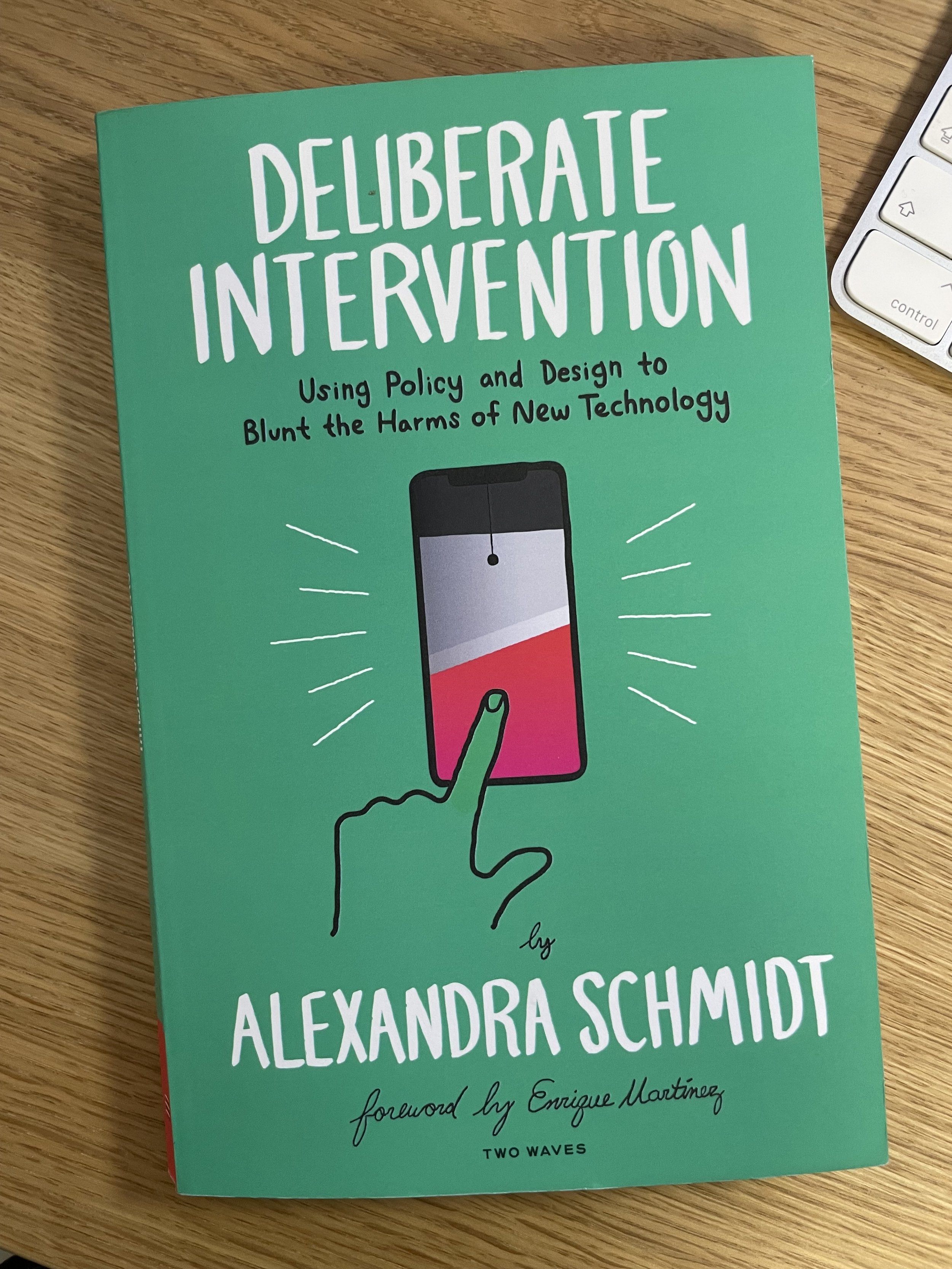Book review: Deliberate Intervention
I call them ‘the outflankers’.
For perhaps seven years now, I’ve argued for tech teams to prioritise ethics. But there are always some who insist I’m wasting my time: that companies will never change their capitalist spots, that exploitation is in the sector’s genes. What we need, the outflankers argue, is structural change. Regulation. Oversight. Policy.
Which, yes, sure. I harbour my suspicions that some outflankers are more interested in being seen to have seen further than in offering genuine advice, but I can’t disagree with their premise. Of course we need to pull those broader levers, even though I see it as a ‘yes and’. I still work with tech teams since I know how they think and behave, and I can use that knowledge to help teams act more responsibly.
I can’t deny, though, that product/UX designers are painfully ignorant about policy and regulation. I’ve always found these concepts obscure and abstract myself: I didn’t understand how policy works, how it gets formed, or how industry should parse it. Candidly, one reason I joined the ICO was to cover this hole in my knowledge. But designers who don’t want to make that drastic a leap are now in luck, thanks to Alexandra Schmidt’s new book Deliberate Intervention, an excellent introduction to the colliding design and policy worlds.
Deliberate Intervention begins by discussing what readers can do if, like the author, they suspect something’s not right in the world of technology design. The sections on anticipating harms are among the best I’ve read in a practitioner book, starting with historical examples from toy safety to seat belts, then turning to ways of spotting emergent harms (a particular focus of mine these days). Schmidt then turns to deceptive design patterns, elegantly classing them as an intentional subset of these harms.
From there, the book’s horizons expand further. Schmidt argues that even the contrasting communities of industry and civil society approach innovation in remarkably similar ways: define, design, implement, evaluate, repeat. The comparison doesn’t always hold, though. Product design and policy horizons are wildly out-of-sync – six months vs. a decade or more – and their value systems are different or even directly opposed: capitalist profit for private-sector UXers vs. public good for policy specialists. But Schmidt is optimistic about the possibilities for better integration, arguing that persistence and creativity can help bridge the gap between corporate ethics, regulatory oversight, and social good.
As I read the book, I was reminded of perhaps my favourite quote about design:
“Always design a thing by considering it in its next larger context – a chair in a room, a room in a house, a house in an environment, an environment in a city plan.”
Maybe policy and governance are the larger contexts for UX and product design: if so, we owe them our attention. Deliberate Intervention, then, is a grown-up, skilfully written book that our industry might just be ready for.
Demystifying regulation and policy isn’t just useful for the outflankers. It’s important for anyone who wants technology’s power to be applied responsibly as its scope increases. So I think Deliberate Intervention is a useful read for senior practitioners, particularly strategic designers. In fact, it’s probably helpful for anyone designing in a regulated industry, or one that’s about to be. In other words, pretty much everyone.
Ethics note: I bought this book through my own company budget. Deliberate Intervention references my own work on occasion; I didn’t know this in advance. I consider Lou Rosenfeld, owner of the publisher Two Waves, a friend but this review is freely given and has not been solicited. There are no affiliate links on this post.
